Caravaca Tourist Office +34 968 70 24 24
or send an Email
Click HereCaravaca Tourist Office +34 968 70 24 24
or send an Email
Click HereCaravaca de la Cruz, in the North-west of the Region of Murcia, is one of only 5 Holy Cities in the world (a centre of pilgrimage along with Rome, Jerusalem, Santiago de Compostela and Santo Toribio de Liebana), and is home to the Cross of Caravaca, the Vera Cruz.
The status of Holy City was bestowed by Pope John Paul II in 1998, granting the City a Jubilee Year every 7 years for perpetuity. The first was held in 2003 and the next one is in 2024.
The strategic and natural advantages of Caravaca de la Cruz have attracted the attention of settlers for more than 800,000 years: the Cueva Negra site has yielded remains of Homo Heidelbergensis, forebears of the Neanderthals, and the municipality also houses important archaeological remains from the Argaric, Iberian and Roman cultures.
As a border town caught between the Catholic forces of Castille and the last remaining Moorish kingdom in the Iberian Peninsula, Caravaca had a turbulent medieval history, but it was during this period that the legend of the Cross of Caravaca was born, bringing the religious orders which shaped the structure of Caravaca today, with its impressive hilltop castle and eclectic collection of churches and monasteries. Today religious tourism is a backbone of the town's economy.
The municipality also has important natural resources, including extensive forests, some of which have protected status due to their wealth of flora and fauna, and due to the abundant water supply it is also a major area for canned fruit production, apricots in particular being an important crop.
Caravaca is renowned for its May fiestas, held in honour of the Vera Cruz, which also incorporate the Moors and Christians celebrations and the Running of the Wine Horses.{image4}
It is also home to Europe's largest collection of ethnic instruments at Barranda, the Museo de Música Étnica Barranda, and is the location of the Barranda festival de Cuadrillas, which celebrates the Region's ethnic music traditions.
Where is Caravaca de la Cruz?
The municipality is home to around 26,000 inhabitants and shares boundaries with Moratalla, Cehegín, Lorca and the provinces of Granada and Almería.
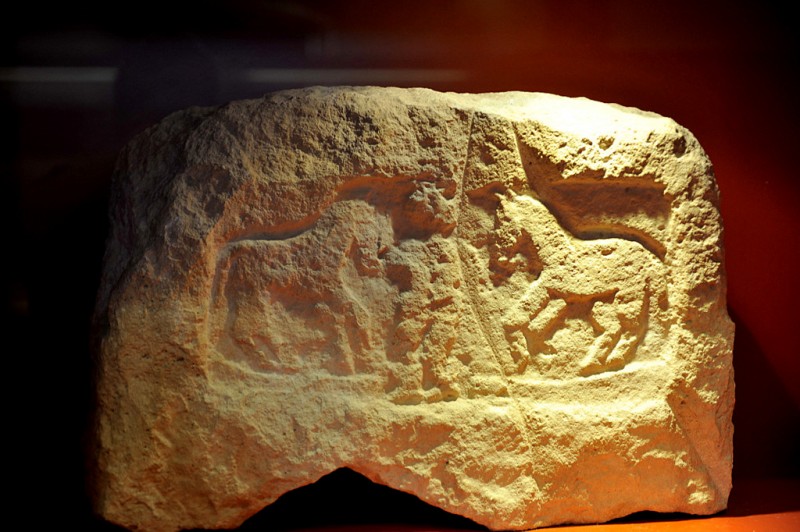
Caravaca de la Cruz shares many of its main historical events with the rest of the Region of Murcia, but the attractions and strategic advantages of its location both contribute to it also having a unique story to tell.
The Cueva Negra archaeological site not far from the city contains some of the oldest evidence of habitation by hominids in Europe, and after falling out of favour under the Romans the area of Caravaca took on strategic importance during the centuries between the Reconquest of Murcia from the Moors in 1243 and the expulsion of the Nazarid dynasty from Granada in 1492. It was during this time that the suffix to the town�s name was added, following the emergence of a fragment of the �True Cross� on which Christ was crucified, and this religious significance has been an essential element in the development of Caravaca ever since.
Nowadays Caravaca de la Cruz enjoys the privilege of a seven-yearly Holy Jubilee Year, a status it shares with only four other cities in the world, and this and the spectacular running of the Wine Horses every 2nd May are its chief claims to fame. However, both the wine horses and the Holy City status have their roots in the history of Caravaca, and a brief journey through time is necessary to understand how the settlement has developed.
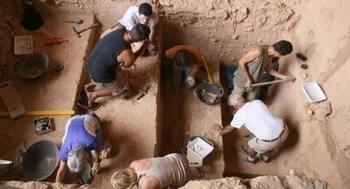
Prehistoric settlements in Caravaca
The strategic location of what is now the municipality of Caravaca de la Cruz has attracted settlers from the earliest pre-history, relatively soon after the forerunners of modern Man are first believed to have crossed into Europe from northern Africa.
In the field of paleontology Caravaca has become something of a Mecca since the discovery and investigation of the Cueva Negra site. This is a cave measuring 12 metres in both width and depth in the Estrecho de la Encarnaci�n, alongside the River Qu�par (one of the tributaries of the Segura), and since 1990, under the supervision of Professor Michael J. Walker of the University of Murcia, the remains of hominids from between 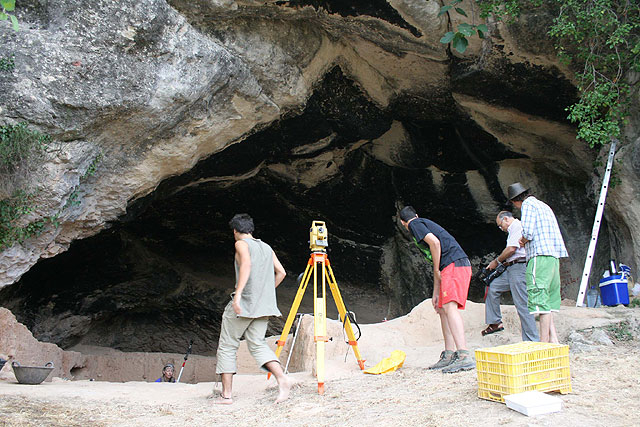 780,000 and 990,000 years ago have been found there. These include two bones and six teeth belonging to Homo heidelbergensis, the direct predecessor of Neanderthal Man, and the remains of a bonfire which have been found in the cave are believed to be the oldest in Europe.
780,000 and 990,000 years ago have been found there. These include two bones and six teeth belonging to Homo heidelbergensis, the direct predecessor of Neanderthal Man, and the remains of a bonfire which have been found in the cave are believed to be the oldest in Europe.
A large number of animal remains are also present, with over 60 bird species and the ancestors of elephants, rhinoceros, giant deer, bison, hyenas, horses, boars and tortoises. Each summer Professor Walker leads teams carrying out further excavations at the site, and each year more revelations come to light.
There are also objects from the Paleolithic Era in the caves at La Represa and El Remoj�n, where flint scrapers have been found, and there is another important cave at Los Alcores, where burial sites and the first evidence of ceramics in the area have been found near the cave.
The archaeological museum in Caravaca has an excellent collection of prehistoric implements from these sites, as well as an easy to follow timeline display showing the various sites in the area.
The Argaric culture was also present in Caravaca, in the form of the settlement at La Placica which dates from between 1800 and 1300 BC, and this is thought to have been the first settlement on the site where the city of Caravaca now stands.
In addition, in 2009 it was announced that archaeologists at the Camino del Molino site in Caravaca had found the largest prehistoric ground in Spain, containing the remains of at least 1,300 people who had been laid to rest there between 2400 and 1950 BC. The evidence points to practically all of those residents of the community, which numbered between 60 and 70 people, having been buried there over a period of 400 years, and domesticated dogs were also found.
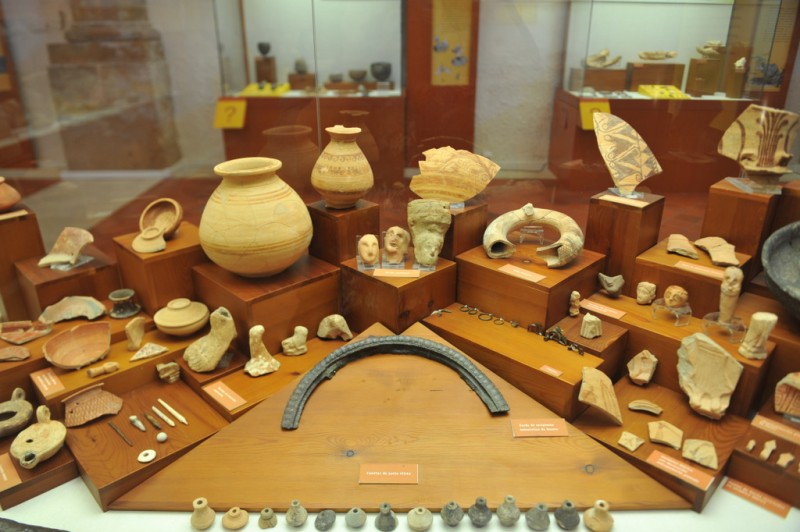
In approximately the 6th century BC the Iberian culture came to Caravaca and the rest of south-eastern Spain, supplanting the Argarics. This culture was technologically more advanced and is renowned for its ceramics and metallurgy, and an important piece known as the Centauro de los Royos, which is now in the National Archaeological Museum in Madrid, was found in the settlement of Villaricos, where there are also the remains of houses, household items and burial grounds. The most significant evidence of Iberian culture, though, is without a doubt the Santuario de La Encarnaci�n, which lies on the hill of the same name under a Christian church. Here images have been found of horses, offerings, warriors and female figures, all of them of great importance to archaeologists.
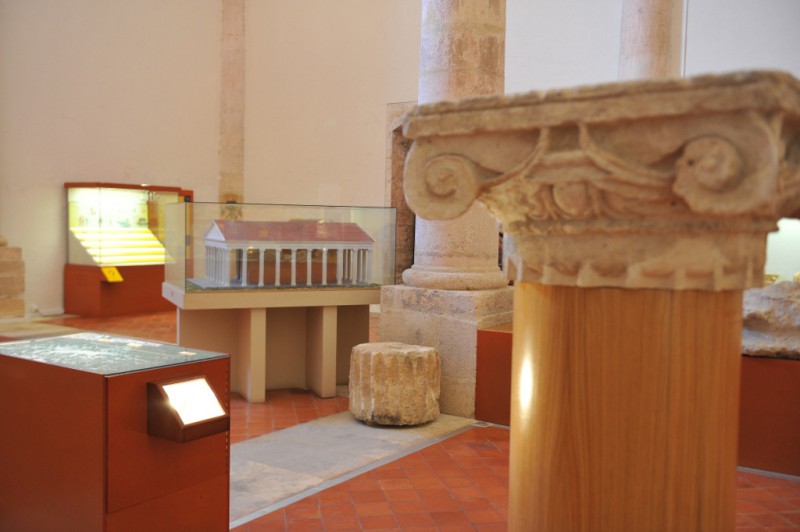
Ancient history: the Romans in Caravaca
The Romans arrived in this part of Spain in 209 BC, when they triumphed over the Carthaginians in the second Punic War and the Romanization of the Iberian Peninsula began.
At this point the Iberian population ceased to exist as an independent definable entity and the Romans effectively took over, occupying and re-modelling some existing settlements and at the same time constructing new �villae�. These were agricultural villas or farmsteads, and one of them, dating from the 1st century BC, was located at El Emplame in the municipality of Caravaca, where thermal baths have been found.
It is also possible to see the remains of a Roman bridge at El Piscalejo and other constructions at La Encarnaci�n, where the most interesting items are the remnants of two classical temples which stood on the brow of the hill in the 2nd century BC. Once again these temples were built on the site of Iberian remains, and not far away the quarries from which the stones for the temples were taken have been found. This is now considered the most important and best documented late Roman temple site in the western Mediterranean.
By the 3rd and 4th centuries AD the first signs of Christianity appeared in the area, and Christian symbols began to be used on coins, ceramics and architectural decorations. However, in the later years of the Roman Empire and later under Visigoth rule the historical evidence related to Caravaca disappears, and doesn�t surface again until many years later. There is no clear explanation of why this should be the case, but not for nothing is the middle of the first millennium AD often referred to as the Dark Ages!
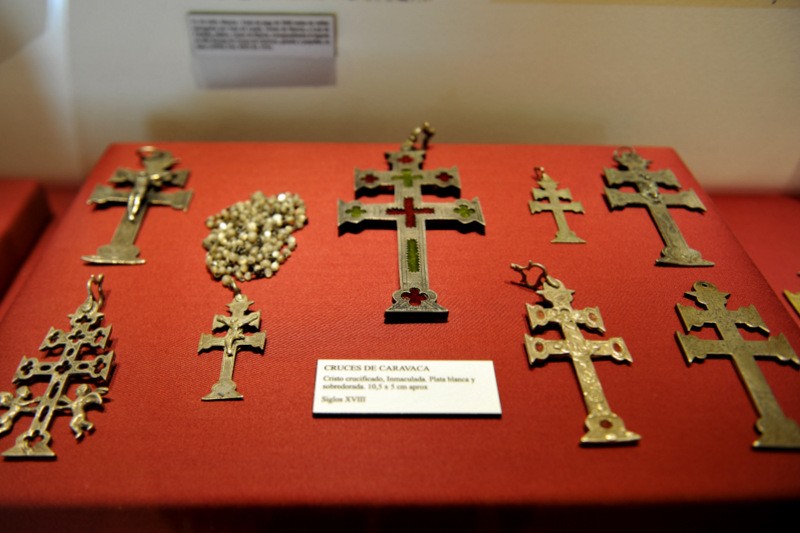
The Middle Ages in Caravaca
The Moors came to Caravaca and the rest of what is now the Region of Murcia after the signing of the Pact of Tudmir in 713, and settled in the area. As in the rest of Spain, they built military fortifications such as the one at Torre Chacona and the remains which are still visible in Calle El Carril. However, Caravaca was not a very important town under the Moorish rule which lasted until the 13th century, and the first written reference to the city under the Moors comes from the 11th century.
Approximately 15 kilometres from the city of Caravaca, in the valley of the River Qu�par in La Encarnaci�n, is an unusual cave fortification dating from the last years of the Moorish occupation of Murcia. This is known as the �Cueva del Rey Moro� (the cave of the Moorish King), and gave those using it an ideal vantage point over the old road from Caravaca to Granada.
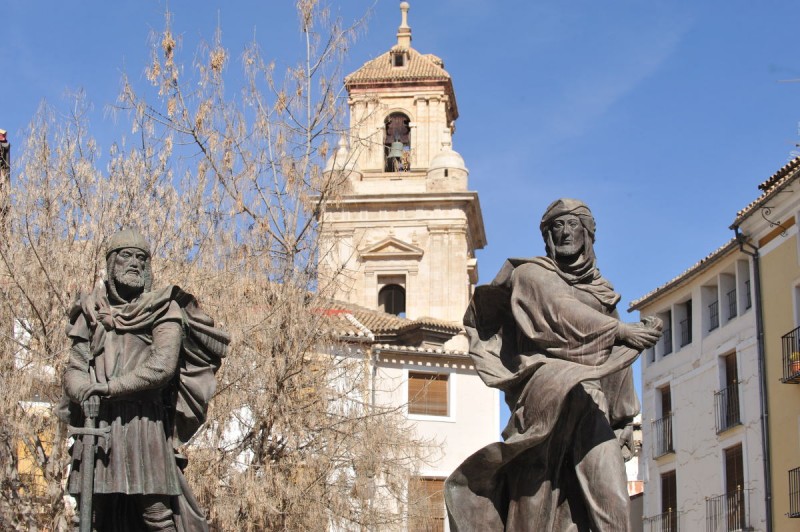
The Appearance of the True Cross in Caravaca
The Reconquista of the territory of Murcia by Christian forces is generally held to have been in 1243, but it was earlier than that, in the years following the Battle of Las Navas de Tolosa in 1212, when the Christian advances towards the south of the peninsula were gaining momentum, that the �Vera Cruz� (True Cross) made its appearance in Caravaca.
The story goes that the land around the town had been conquered by Abu-Zeit, the Almohad leader in Valencia, who interrogated one of his prisoners on 3rd May 1232. The prisoner was Gin�s P�rez Chirinos, a priest, and when he was asked what his job consisted of, he replied �Saying Mass�. Abu-Zeit�s curiosity was aroused, and he ordered that all of the priest�s paraphernalia be brought in order for him to give a demonstration.
Not long after he started, though, Chirinos realized that his crucifix was missing, and he couldn�t continue. At that moment two angels are said to have entered through the window carrying the True Cross (the one on which Christ was crucified), which they placed upon the altar. Faced with this miraculous apparition it is said that Abu-Zeit and his followers converted to Christianity.

The Reconquista, the wine horses of Caravaca and the advent of Christian rule
As the Catholic kingdom of Castilla extended towards the south of the peninsula in the middle of the 13th century the kingdom of Murcia was effectively relinquished by the Moors by the terms of the Treaty of Alcaraz, signed by Fernando III in 1243.
At first the property, laws, customs and religion of the Moors in Caravaca (and the rest of Murcia) were recognized, in exchange for the payment of a portion of their revenue and the surrender of their fortress. By this agreement the castle of Caravaca de la Cruz was handed over to Berenguer de Entenza, from Arag�n as a gesture of gratitude for the support he had given to the Castilian king.
It is around this time that the holding of the annual running of the wine horses is thought to have originated. Nowadays this is a major tourist attraction, bringing well over 100,000 visitors to Caravaca every 2nd May, but legend has it that the very first occasion on which the horses pelted back up the hill to the castle was in or around the year 1250.
The story goes that the garrison stationed in the fortress on the top of the hill were running short of drinking water during a Moorish siege of Caravaca, and that as a desperate measure some of the knights bravely sallied forth on their horses in search of fresh supplies. Unable to find water in the �Campillo de los Caballeros� they returned instead with skins full of wine on the backs of their trusty steeds, hurtling back up the slope as fast as possible in order to avoid interception by the forces of Granada.
On arrival they received heroes� welcomes, with the ladies of the settlement draping elaborately embroidered shawls on the knights and their mounts.
Since the Middle Ages the events of that day have been re-enacted, although it was not until the 18th century that the proceedings began to take on the structure they have today, and it was only in the 19th century that it became the festivity which has made it famous all over Spain and beyond.
After the Mud�jar uprising of 1264 the Moors in Murcia lost all of their privileges. The �villa� of Caravaca de la Cruz was placed in the hands of the Order of the Templars in 1266, and they governed it until the Order was dissolved in 1312, with a brief hiatus between 1285 and 1290 when the town was under the direct rule of Sancho IV of Castile. After numerous changes it was finally entrusted to the Order of Santiago, led by Don Fadrique, the bastard son of Alfonso XI, in 1344.
Caravaca may have been re-taken from the Moors, but the situation was far from stable even a hundred years later in the 14th century: indeed, as Granada was still ruled by the �enemy�, Caravaca and other settlements in western Murcia were effectively frontier towns, and were dangerous places to live. In fact, Caravaca de la Cruz was practically uninhabited, due not only to this precarious location but also to the frequent epidemics which struck down large proportions of the population.
During the 15th century the town took part in a revolt led by Alonso Fajardo �El Bravo�, who led the Castilian victory over the Moors at the Battle of Los Alporchones in 1452 but later came into direct conflict with the Crown and took refuge here. He had gradually lost all his other supporters and his final stand came in Caravaca in 1461, by which time the town had become more important on account of its strategic location on the frontier having been consolidated and the swathes of pasture land which were grazed by sheep and horses.
Together with the local agricultural production, this pasture land was one of the factors which led to Caravaca being an attractive location for settlers once the kingdom of Granada fell and the Moors were expelled in 1492, and after centuries of abandonment the town was steadily repopulated. Further prestige had been acquired shortly before the Reconquest of Granada, when King Fernando visited in 1488 to worship the True Cross: he also presented the city with a silver lamp which still hangs in the presbytery of the Basilica.
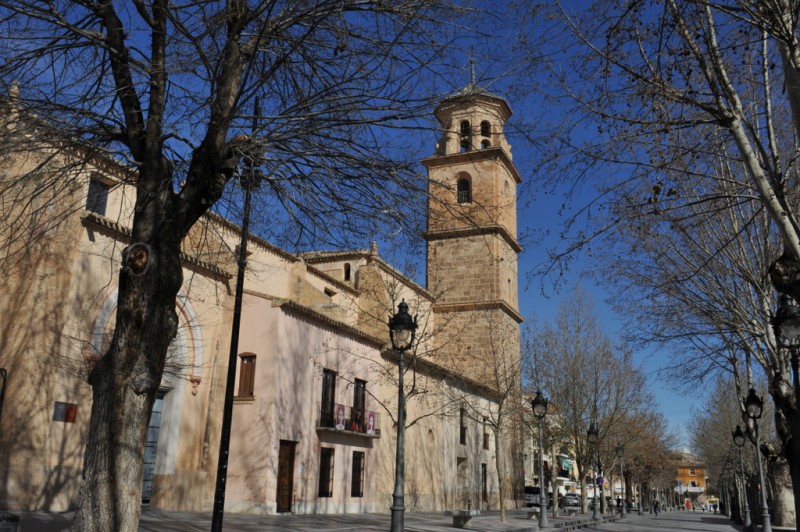
The arrival of religious orders in the 16th century
It was in this climate of stability after the expulsion of the Moors that the population of Caravaca de la Cruz at last rose significantly, reaching as many as 9,000 by 1600.
But this growth was not exclusively down to the absence of threat from the Moors. Crop rotation and the technique of leaving fields to lie fallow were also important, and now that peace was more or less guaranteed many religious orders were attracted to Caravaca by the relics of the True Cross. In 1532 the Hermanos de San Juan de Dios came to the town, followed by the Franciscans in 1566 and the Carmelitas de Santa Teresa, who founded the monastery and church of San Jos�, in 1576. The Order of the Jer�nimos arrived in 1581, and the Carmelitas de San Juan de la Cruz in 1586, this last brotherhood founding the church of Nuestra Se�ora del Carmen.
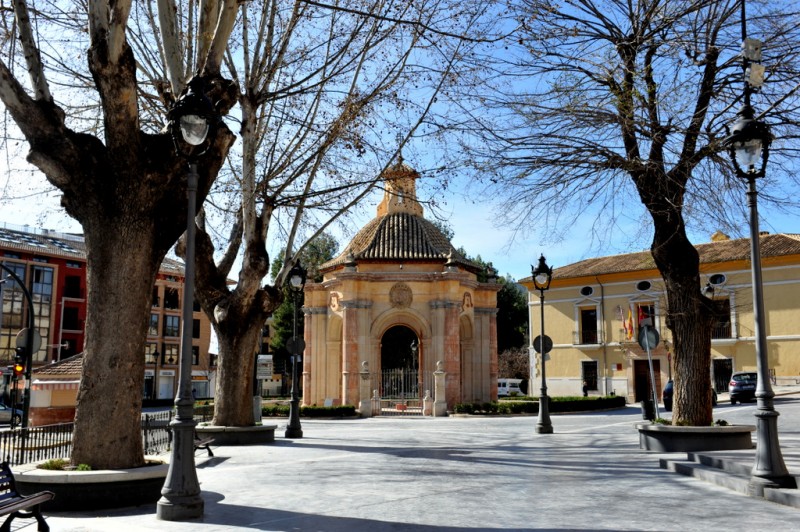
Caravaca de la Cruz in the Baroque Period, 17th and 18th centuries
In the early 17th century the population was decimated by epidemics, but these crises were soon overcome and the number of inhabitants continued to grow.
This return to prosperity was attributed by many to the powers of the True Cross, to which the locals had prayed throughout the years of adversity, and partly as a result of this fervour more religious orders gravitated towards the relic. These included the Order of Santa Clara in 1609, and in 1617 work was begun on the Santuario de la Vera Cruz: until it was completed in 1703 the cross itself continued to be kept in a chapel of the Torre del Homenaje.
The Concejo, its councillors and the Order of Santiago worked efficiently in the town�s administration, and the 18th century saw further growth. In 1730 the main gate of the Santuario was built, followed by the prison in 1737 and the Ayuntamiento (Town Hall) in 1743. The Templete was started in 1762.
This building fever was accompanied by a burst of artistic creativity, as can be seen in the monuments of Caravaca, which are full of the ornamental decoration typical of the baroque period, and the same detailed artistry can be admired in the numerous altarpieces in the city.
Freeing from Encumbrances in the 19th Century
During the War of Independence, also known as the Peninsular War, a military academy was created in Caravaca, but this was not enough to stop the progress of Napoleon�s troops, who laid waste to the area. 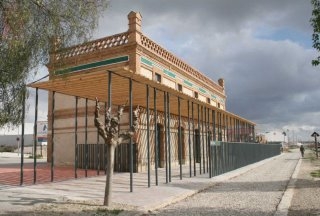 Sixteen cannons were placed at the top of the castle, which was almost destroyed by the French.
Sixteen cannons were placed at the top of the castle, which was almost destroyed by the French.
Once the war was over, there were conflicts of another kind in Caravaca de la Cruz. These began with the disagreements between liberals and absolutists during the reign of Fernando VII (1814-33), and in the time of Isabel II (1833-68) the laws passed by Mendiz�bal (1836) and Madoz (1856) freeing land from encumbrances changed the map of the town considerably. Many ecclesiastical bodies had held land in this part of Murcia, including the Order of Santiago itself, and due to resentment at this deconstruction of the established order of things the deposition of Isabel II was met with great acclaim by the local population, despite her having been the one to grant Caravaca the status of �City� in 1849.
The population grew throughout the 19th century, reaching 15,000, and expansion was interrupted only by outbreaks of cholera and yellow fever. The society and economy of Caravaca were lively, with periodic fairs being held related to the area�s thriving crop farming, cattle rearing, crafts and industries.
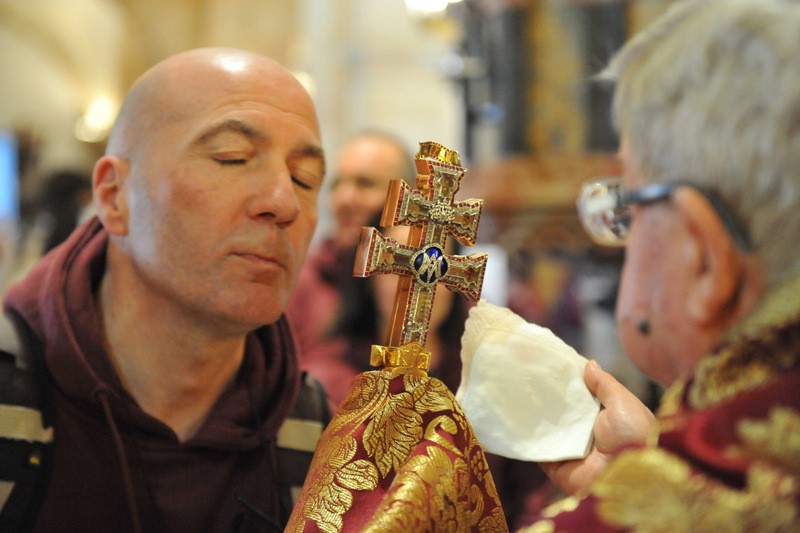
The theft of the True Cross and the 20th century
The first part of the 20th century was marked by political upheavals in Spain, such as the proclamation of Alfonso XII as king in 1902, the dictatorship of General Primo de Rivera in 1923 and the beginning of the Second Republic in 1931. Caravaca was greatly affected by all these events, having been officially recognized as a city in 1849, while during the first part of the century the expansion of the city centre continued with the construction of the Gran V�a, the cinema, a new cemetery and the main food market (Plaza de Abastos). In addition, the Plaza de Toros was restored and expanded in 1926.
However, all of these events and developments in Caravaca were overshadowed by the theft of the Holy Relic of the True Cross just before the Civil War in 1934.
This was felt to be a tragedy by the locals at the time, and the circumstances surrounding it have never been clarified. However, the resourcefulness of the Catholic Church came to the rescue seven years later, and the city�s religious identity was fully restored in 1941 when Pope Pius XII granted another �Lignum Crucis� to Caravaca.
The years of Franco�s dictatorship were not kind to Caravaca, and following the collapse of the espadrille sector in the early 1950s many left the city and emigrated to Madrid, Catalunya, France and Germany in search of financial stability. By 1970 the population had fallen from over 21,000 to 18,000, and even after the death of General Franco, when Caravaca de la Cruz elected its own mayor as well as secondary mayors for each of the districts in the municipality, the economy was in decline.
Eventually a certain degree of prosperity returned due to increased production of cereal and fruit crops (including apricots, apples and almonds), an upturn in the cattle farming sector and a re-invention of the footwear industry, and at the same time another factor was the construction of important infrastructures in and around Caravaca. These included the Hospital Comarcal and the motorway which links Caravaca to the regional capital in Murcia.
Another boost was received in 1998, when during the papacy of John Paul II the Vatican awarded Caravaca a Holy Jubilee Year to be celebrated every seven years �in perpetuum�. The first of these Jubilee years was in 2003, and Caravaca is now one of only five cities in the world to host such an event.
This provides a kind of natural seven-year cycle to life in Caravaca, where both religious and rural tourism have grown in importance since the turn of the millennium and infrastructures such as the V�a Verde walking route and the motorway have brought more and more visitors to the north-west of Murcia from the rest of the Region of Murcia and beyond.